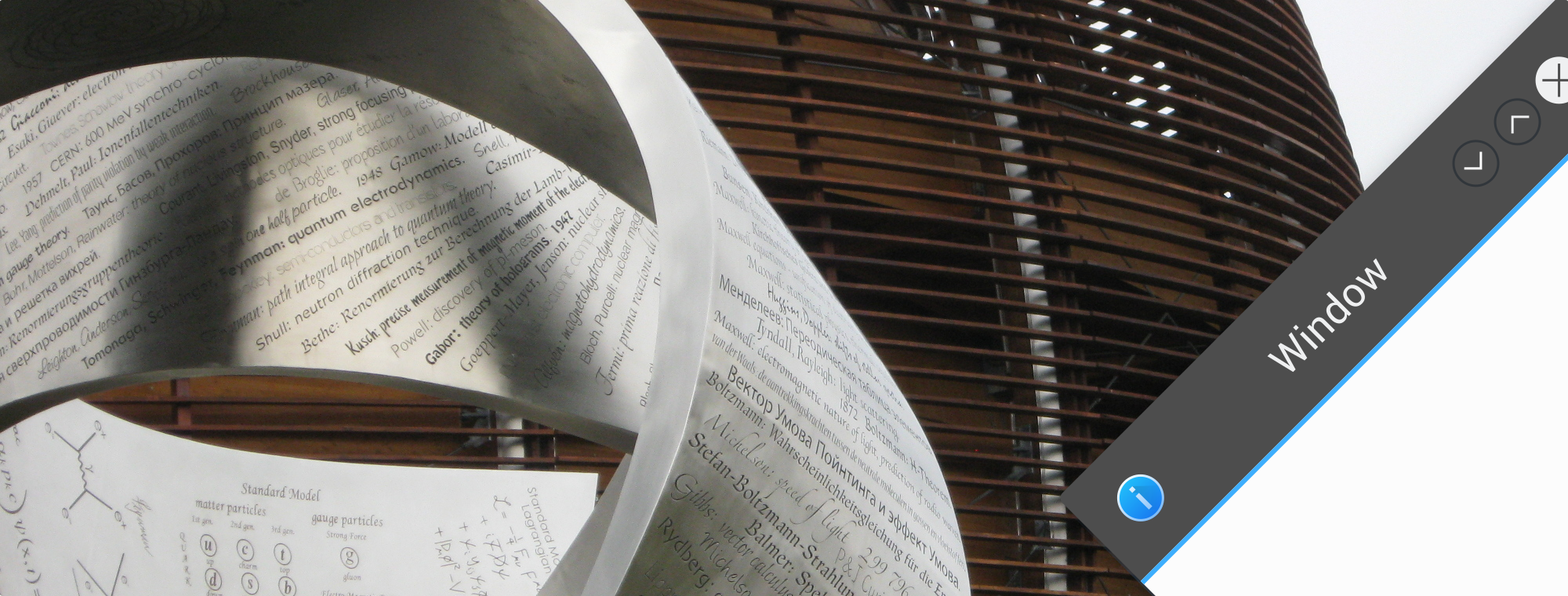
After a seeming eternity the unthinkable has finally happened; DWD has been discussed formally on an implementation level and it’s exciting to say that some parts are now under development. Thanks to the CERN Sprint we’ve had Martin Gräßlin, Sebastian Kügler, a couple others, and myself in one room able to make final decisions on how it will all come together.
Dare I say DWD is officially real, entering development, and coming? Yes!
Previously I’ve made two posts about DWD concepts, this post will summarize the basics of DWD as it has been finalized. Some parts of both designs previously posted have been used and I’ll make another post later including mockups with more detailed information, but for new here’s an overview of DWD basics;
Low-Level IPC
DWD will use D-Bus as its IPC, being implemented via the KWin Window Metadata Tier 1 Framework. This is for Qt/KDE driven implementations, but anyone can implement DWD via D-Bus.
Core Structure
At its core DWD will work with ‘Semantic Objects’ and ‘Priority Groups’. Semantic objects refer to things like ‘media player controls’, ‘navigation’, and ‘actions’. Applications bundle Semantic Objects into Priority Groups, then push those groups to the window manager.
The window manager will tell the app whether a group was accepted or rejected; a group is rejected if any single semantic object in that group is denied for any reason. Higher priority groups get first swing at embedding their controls, and it may affect widget placement in certain situations, such as phone controls.
From there applications just hide their own elements in response to what groups were accepted. There will be some events and flags as well, but we won’t get into that yet.
Customisation
One aspect to note is that DWD will offer no customisation on the client-side. I had gone down that rabbit-hole in an early draft and we all deemed it overcomplicated. Ultimately what applications need to know is that the controls are being served – not how or where they’ve been served.
One thing we did was look at is Gnome CSDs which offered all the craziness applications could possibly want, and we noticed they weren’t actually being all that crazy with it. Generally the same controls made repeat appearances and when it really comes down to it in practice there’s not much of a value in extreme customisation. As we said previously if you need extreme customisation and weirdness this may not be the method for you – which is fine. At the same time we would recommend application authors examine why they would need exotic controls, and why they specifically need them in the windeco.
Stewarding the Protocol
One thing that was discussed was who and how to steward the protocol. When I first posted about DWD there was backlash about KDE being a ‘protocol gatekeeper’. Afterwards I proposed an extension-based design which also had backlash because it could make the protocol technologically ‘complex and messy’.
Ultimately we decided to steward the protocol and simply work with anyone who wants to be included in the design process directly. We will accept input into where the protocol will go and provide any resources we can.
One thing that was made clear was that some groups are uninterested in considering the DWD approach after being asked. We all agreed it’s not worth making a convoluted extension system just to cater to groups which probably won’t participate, instead focusing on making the best protocol we can for those who want DWD. For those environments that will not support DWD I’m glad to say that it’s still 100% compatible and applications using it will continue to work as normal, they just won’t have content in the decoration. We will not be breaking other environments.
Again, we’ll be open and welcoming to anyone who wants to join us in working on and implementing DWD.
The Implementation Plan
Right now early work is being done on our existing frameworks to move them into position to implement DWDs. Once that is done we’ll implement the protocol with a minimal number of Semantic Objects, and using the low-level API port a small number of simple applications as a beta. Applications being considered for initial DWD tests include Konsole, Kate, KCalc, and similarly small apps with basic requirements.
After the API has proven itself on smaller-scale applications we would move up to heavier applications. KDevelop was mentioned specifically as a candidate as its relatively heavy UI could benefit from space-saving DWDs while developers could very quickly give us high-quality feedback. This may be where we move to higher-level classes which will hide away the group/object system as well.
Designs & Reference Material Incoming
I’ll be making another post later with designs which should be mostly accurate to what the final protocol will produce; accurate enough to place in the Wiki as design references for how applications should look when using the final DWDs.
While Martin will continue focusing down Wayland and making excellent progress, he also had a rough timeline for when we can expect basic DWDs make an appearance. I won’t quote him as it was an off-the-cuff estimate, but it’s exciting to know there’s light at the end of the tunnel, and that we’re out of the conceptual phase.
On a complete aside it was a complete pleasure meeting everyone. Great to see some of the friends I met last year again, fantastic to make many more new ones, and I wanted to thank everyone in the Sprint as well as those who supported it for making such a great event happen.
Special thanks to CERN for hosting this Sprint! Be awesome and support future Sprints by clicking the links below;
Via Paypal for one-time donations
Become an ongoing contributor and official supporting member